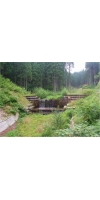Wine from Akita

The Akita prefecture is situated on the beautiful lush island of Honshu and boasts of beautiful mountain ranges, velvety forests, and crisp blue lakes. This prefecture is a beautiful region that has been labeled as an ideal land for sake production. The Akita prefecture is the fourth sake producing region and is known as a fantastic land filled with high quality rice, cool water, and nice cool weather that aid sake brewing. The cold and frigid winters often bring large amounts of snow. The Akita prefecture’s first record is dated the year 658, but in 733, Akita Castle was built in the region and more roads and buildings were crafted as a result. The region remained mostly separated from Japanese culture and society until around the year 600, due to its location. The prefecture was the home of mostly tribes and hunters. The Akita prefecture is situated far from sprawling metropolitan areas, which is one of the reasons why some believe that sake production only escalated during the 20th century, when technology and transportation expanded. Today, there are roughly 50 breweries in the prefecture. The breweries initially crafted ginjo, but today, the region produces some of the best sakes because of its lush landscapes and climate.
No products found
- back
Selected Options
Regions
Categories
Pricing
Countries
Regions
Grape Types
Wineries
Organic/Free Shipping
Chavy-Chouet Meursault Premier Cru Les Genevrieres is made from 100 percent Chardonnay.
Fruity flavors and typical nutty nuances. The Genevrières parcels are located in the heart of Meursault's southern premiers crus. "Genevrieres" takes its name from the presence, years ago, of the juniper bushes which covered its slope, and it is sometimes said that the tang of this aromatic berry can be detected in the wine.
The Genevrières parcels are located in the heart of Meursault's southern premiers crus. "Genevrieres" takes its name from the presence, years ago, of the juniper bushes which covered its slope, and it is sometimes said that the tang of this aromatic berry can be detected in the wine.
Fruity flavors and typical nutty nuances.
The Prisoner Wine Company The Prisoner Red Blend is made from a blend of Zinfandel, Cabernet Sauvignon, Petite Sirah, Syrah, and Charbono.
Bright aromas of ripe raspberry, vanilla, and coconut give way to flavors of fresh and dried blackberry, pomegranate, and vanilla, which linger harmoniously for a smooth and luscious finish.The Prisoner Red Blend was inspired by the wines first made by the Italian immigrants who originally settled in Napa Valley. The Prisoner is now the most recognized red blend, leading the resurgence of interesting blends by incorporating Zinfandel with the unlikely mix of Cabernet Sauvignon, Petite Sirah, Syrah, and Charbono.
On the nose, dried blackberry, dried açai berries, and hints of cedar and tobacco leaf are accented by sweet spices of clove, cinnamon, and nutmeg. Flavors of ripe dark cherry, blackberry coulis, and hints of anise linger harmoniously for a soft, vibrant finish balanced by ripe tannins.
Chef Brett recommends pairing The Prisoner Red Blend with Kalbi Short Ribs or Chicken Mole Tostada.
Vineyards: When you outgrow winemaking tradition, you must forge your own path. And we did. The Prisoner exists because of the collaboration with our growers, many of which have been with us since the very beginning—from the Solari Family Vineyard in Calistoga, where old school sensibilities meet new techniques, to the Korte Ranch in St. Helena, a vineyard whose diligence outlasted the Prohibition and has sustained four generations.




